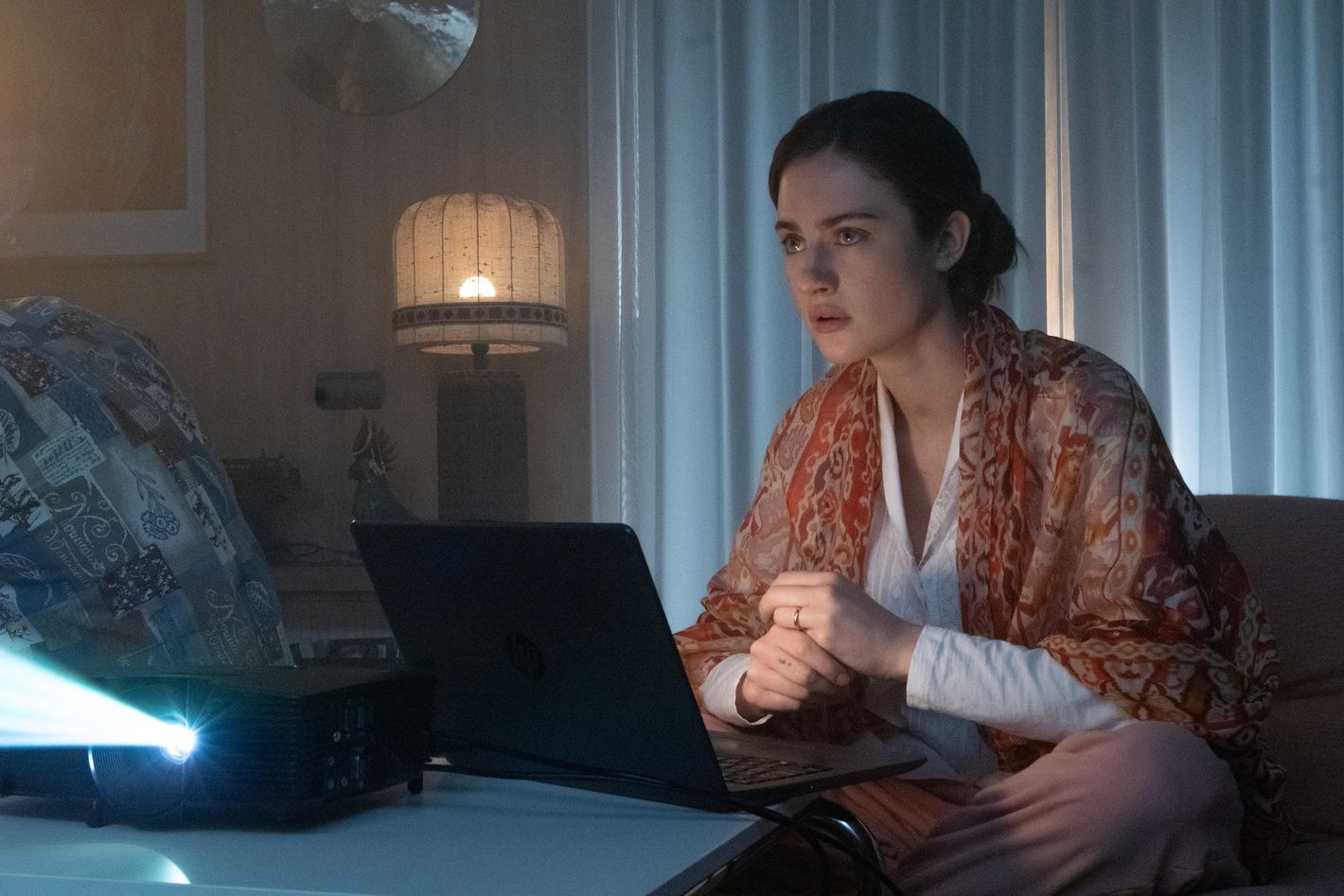
Hulu’s eight-part docuseries The Twisted Tale of Amanda Knox takes viewers through Amanda Knox’s eyes of her experience of being accused in the 2007 killing of her 20-year-old English roommate. Knox is played by Grace Van Patten, who dons blue contacts to complete the transformation, and begins before the American student travels to Italy for her study abroad. Executive-produced by Knox herself, and produced by Monica Lewinsky, the series emphasizes how naïve Knox was at the time, and just how harshly she was treated by not only the press, but an entire country.
Most everyone knows the story, thanks to its headline-driving details: On November 1, 2007, a student named Meredith Kercher, 21, of Leeds, England, was killed in her shared apartment. Her roommate, Knox, suspected something happened in their apartment when she returned home on November 2 after spending the night at her then-boyfriend, Italian local Raffaele Sollecito. Upon arrival, she noticed blood spots, a broken window, and a locked door to Kercher’s room. Hoping that it was just a break-in, she alerts the local authorities, who find Kercher’s body and a gruesome crime scene. The Hulu series, which aired its finale on October 1, focuses on Knox’s perspective, even adopting elements of magical realism to depict how unreal those years of her life felt. Ultimately, Sollecito and Knox were convicted of being complicit in a murder and sentenced to 25 years in prison. They only served four before their convictions were overturned and they were set free.
While the details of what happened haven’t changed, the series did outline an exact road map of what not to do when being questioned in a foreign country, a mostly unfamiliar language. It showed the amorphous way of how being questioned as a witness spiraled into being questioned as a suspect. Everything happened so quickly for her — the show illustrates how she missed the signs and failed to assert her right to ask for an attorney, get help from the U.S. Consulate or even consult with a family member. The requests that could have altered the trajectory of her life. Throughout the season, the show depicted all the places that the investigation went wrong for Knox, and acted as a clear warning of what not to do. Here’s everything we learned from Knox’s retelling.
Amanda Knox’s lovey-dovey behavior did not translate well.
Knox and Sollecito’s affection toward each other at the crime scene and later at the police station struck the investigators and the friends of Kercher as bizarre. Police told Knox and Sollecito, who had known each other for only eight days, to separate when they saw them cuddling in the waiting room. According to Knox, Kercher’s British friends told police that there was something about her that made them uneasy. After questioning Knox, investigators found it unusual that she had returned to the group house after spending the night at Sollecito and taking a shower after noticing drops of blood in the bathroom and on the bath mat. According to Knox, Kercher’s British friends told police that there was something about her that made them uneasy and that “she brought a lot of men home.” They also thought it unusual that she had a vibrator in her things, which Knox explained was given to her as a gag gift as a going-away present by a friend back home before she left for Italy.
Knox realized too late that she was actually a suspect.
Two days after Kercher’s death, Knox’s mother called her and they both noticed an unusual clicking noise on the phone. After enduring 14 hours of questioning the day after Kercher’s murder, Knox returned to the police station for more and told police she was exhausted and hadn’t slept. They took Knox back to the murder scene asking her to open the drawer in the kitchen that contained knives and asked her if anything was missing. She started crying and hitting herself on the head, which the police found very suspicious.
One lie ruined her credibility.
One of the roommates told Knox to lie about the fact that they smoked pot in the house. When Knox denied to police she had smoked pot, they branded her a liar.
Under extreme interrogation pressure, Knox confessed to being complicit.
Knox’s first interview with the police was without a translator and many of her statements appeared to be misconstrued. Knox said there were six police in the room who continued to question her without a translator. In the middle of the police interrogation, Knox’s mother called, but the police took the phone away. When the translator arrived, Knox asked her if she needed a lawyer but didn’t receive an answer as the cops continued to hammer her with questions.
Knox asked to go to the bathroom, but the police said they would only allow her to if she gave them her phone. She does and they immediately start combing through it for evidence. They saw a text to her boss, Patrick Lumumba, that read “See you later, have a good evening” and interpreted it to mean that she had planned to meet up with him on the night of the murder. Knox tried to explain that it was just an American saying and that it didn’t literally mean she would meet up with him later. Police said Sollecito had “taken away her alibi,” and accused her of meeting up with Lumumba, and even resorted to hitting her. Knox said the cop finally broke under the pressure so she blurted out, “It was Patrick.”
… And then she tried to take it back.
She tried to recant the claim, but it was too late. She asked for a pen and paper and wrote a separate statement of what she said really happened. But by then the police announced that they had closed the case and issued an arrest for three people: Knox, Sollecito, and Lumumba.

